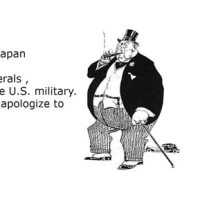SUNDAY, NOV 24, 2013 08:59 PM +0900
Millennials, rise up! College is a scam ― you have nothing to lose but student debt
Students chase degree after degree, adding crushing debt, as jobs vanish. It is time to radically rethink college
RANDALL COLLINS
これはわりに面白い記事
In the United States, high-school (i.e., twelve-year secondary school) diplomas were comparatively rare before World War II; now high-school degrees are so commonplace that their job value is worthless. University attendance is now over 60% of the youth cohort, and is on the way to the same fate as the high-school degree. It is a worldwide trend;
Educational degrees are a currency of social respectability, traded for access to jobs; like any currency, it inflates prices (or reduces purchasing power) when autonomously driven increases in monetary supply chase a limited stock of goods, in this case chasing an ever more contested pool of upper-middle-class jobs. Educational inflation builds on itself; from the point of view of the individual degree-seeker, the best response to its declining value is to get even more education. The more persons who hold advanced degrees, the more competition among them for jobs, and the higher the educational requirements that can be demanded by employers. This leads to renewed seeking of more education, more competition, and more credential inflation.
Within this overall inflationary process, the most highly educated segment of the population has received an increasingly greater proportion of the income; at least this has been so in the United States since the 1980s. One should be wary about extrapolating this particular historical period into an eternal pattern for all times and places.
The mass inflationary school system tells its students that it is providing a pathway to elite jobs, but spills most of them into an economy where menial work is all that is available unless one has outcompeted 80% of one’s school peers. No wonder they are alienated.
The content of education is not predominantly set by technological demand; most technological skills―including the most advanced ones―are learned on the job or through informal networks, and the bureaucratic organization of education at best tries to standardize skills innovated elsewhere. In updated research on credential inflation vis-à-vis technological change, I have seen nothing that overturns my conclusions published in 1979.
Although educational credential inflation expands on false premises― the ideology that more education will produce more equality of opportunity, more high-tech economic performance, and more good jobs―it does provide some degree of solution to technological displacement of the middle class. Educational credential inflation helps absorb surplus labor by keeping more people out of the labor force; and if students receive a financial subsidy, either directly or in the form of low-cost (and ultimately unrepaid) loans, it acts as hidden transfer payments.
In places where the welfare state is ideologically unpopular, the mythology of education supports a hidden welfare state. Add the millions of teachers in elementary, secondary, and higher education, and their administrative staffs, and the hidden Keynesianism of educational inflation may be said to virtually keep the capitalist economy afloat.
As long as the educational system can be somehow financed, it operates as hidden Keynesianism: a hidden form of transfer payments and pump-priming, the equivalent of New Deal make-work setting the unemployed to painting murals in post offices or planting trees in conservation camps.
Education is a major cost of government, and this tends to limit future expansion. With higher costs, there are pressures to privatize, shifting the burden of funding to students or parents; but this too faces a limit as the middle class is economically squeezed. By 2012, there was a wave of publicity in the United States about what kinds of degrees are not worth the cost of acquiring them, in terms of the jobs one can get or one fails to get. Although one individual solution would simply be to drop out of the educational competition, the more popular choice among youth has been to seek specific vocational education, and there has been an upsurge of schools in areas like apparel design, computer programming, business, etc. But the shift to vocational education does not evade the dynamic of credential inflation, and we can predict increasing competition inside those vocational sectors, and rising inflation of vocational degrees. One indicator has been controversy, both in the political sphere and in accrediting and regulatory agencies, critiquing the low rate of job success for such vocational students, and denying them access to government loans. That is to say, the inflated value of educational degrees has become an explicit problem.
An expanding educational system driven by credential inflation reaches a potential crisis point within the educational system itself. This is not necessarily final. One can envision a series of such plateaus, stopping and restarting as our secular faith in salvation through education goes through disillusionment and revival. But if this becomes increasingly government sustained, it amounts to socialism in the guise of education. It is conceivable that liberal governments might find their way to keep expanding educational systems, using them as a Keynesian safety valve, and a form of transfer payments from the capitalists and the diminishing sector of the employed, to sustain the otherwise unemployed. But to get such a government might well take a near-revolutionary disillusionment with capitalism.
My own estimate of the crisis point generated by the mechanism of technological displacement of the middle class depends on the rate at which structural unemployment grows.
An unemployment rate of 10% is painful, by American standards; 25% (found in crisis economies) is big trouble, but it has been sustained in the past. But when unemployment reaches 50% of the work-capable population, or 70%, the capitalist system must come under such pressure―both from under-consumption and political agitation―that it cannot survive. If we think such unemployment rates are unimaginable, let us imagine again, through the lens of technological displacement of all categories of work by electronic machinery. It is clear that the rate of technological displacement has accelerated in the last fifteen years. We could well reach 50% structural unemployment by the year 2040, and 70% not long after that. In gross terms, this agrees with the W-S projection of a terminal crisis of capitalism around the middle of the 21st century.
If the crisis of technology displacement becomes severe enough―a highly automated, computerized world in which very few people work, and most of the population is unemployed or competing for menial low-paid service jobs―would there be a revolution?
Successful revolution depends on what happens at the top, not on disaffected and impoverished masses from below. The chief ingredients are: first, a fiscal crisis of the state; the state becomes unable to pay its bills, and above all to pay its security forces, its military and police. State fiscal crisis becomes lethal when it is joined by the second ingredient, a split among elites over how to deal with it We could add secondary factors, back in the chain of antecedents, typically although not always including military causes; a state fiscal crisis often comes from accumulated military expenses, and elite deadlock is especially exacerbated by military defeat, which delegitimates government and provokes calls for drastic reform. Splits among elites paralyze the state and open the way to a new coalition with radical aims. It is in this power vacuum―what social movement theorists now call the political opportunity structure―that social movements are successfully mobilized. Often they do so in the name of grievances from the bottom, but typically such radical movements are led by upper-middle-class fractions with the best networks and organizing resources.
Virtually all revolutions, up to this point in history, have come not from economic crisis of capitalist markets, but from government breakdown. The key component is fiscal crisis in the government budget itself, but this is usually independent of major crisis in the larger economy. This means revolutions can continue to happen in the future, through the narrower mechanism of state breakdown, the state-centered fiscal crisis, elite deadlock, and ensuing paralysis of state enforcement apparatus.
The crisis of capitalism sets the agenda. At some point the politically mobilized populace will have to deal with it. This could happen by the classic route of state breakdown: the legitimacy of the state is called into question; the state itself stops functioning (paralyzed by fiscal crisis and/or political splits within its own ranks, mirroring political polarization outside); the monopoly over organized violence breaks apart, as police and the military lose organizational coherence and factionalize.
むかしは高校に行く人さえ少なかったわけで、大卒のひとはエリートだったわけですけど、いまでは、高卒も、そして、大卒さえも、めずらしくなく、学位のインフレがおきて、大卒でも就職が困難になってきている、と、。
教育が就職に役立つ知識を与えるか、というと、就職してから必要な知識は就職してから身につけるのであって、高校や大学で教わるものでもない、と。
就職にも役に立たず、就職してから必要な知識を提供するわけでもないが、しかし、経済的には、教育援助して、学生にしておくことで、失業者を減らして、教師などを雇用して、一種のケインズ的公共投資になっているが、しかし、政府の支出が膨らみ、社会主義的になりすぎて、資本主義には打撃になるかもしれない、と。
そして、肉体労働から機械化が進み、さらに、コンピューター社会になって、単純労働は少なくなり、失業者が増え、高度な技術者は一部の人だけで、大卒者が、機械やコンピューターに取って代わられてもなお残っている高い知識や技術を必要としない職業を奪いあうようになると資本主義は動揺し、革命が起きるかもしれない、と。
もっとも、成功する革命は下からではなく、上層エリートの分裂から起きるのである、と。まず、国家が財政危機に陥る。そして、支払い、特に軍部や警察への給金が支払えなくなる。それにどう対処すべきかで、上層部が分裂し、その権力の空白に、、中流の上階層の組織が食い込んで、急進的な目的をもった連合を形成していくのである、と。



















